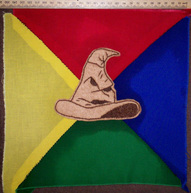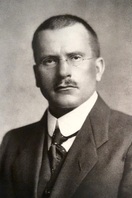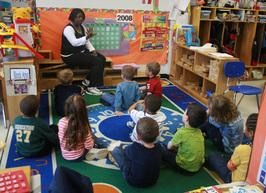
Learning styles are about the process of acquiring knowledge. There are many models for representing different learning styles. Carl Jung is the father of the personality and learning styles movement. Jung (1927) explains that there are two specific areas that deal with the process of knowledge acquisition. First, there is a difference in the way individuals are inclined to perceive information. Perception explains how a person goes about finding out about people, places, and things. Perception takes place either through sensing or intuition. Sensing individuals perceive information through direct interaction with the world around them, and by using one or more of their five senses - seeing, hearing, feeling, touching, a smelling. Intuition comes from a “sixth” sense.
Consider the following example of intuition. Malcolm Gladwell (2005) discusses the Getty kouros in his book Blink. During the process of deciding the authenticity of a Greek statue, a kouros, the Getty Museum’s policies were followed and an extensive analysis took place. The kouros was found to be an authentic and rare Greek statue, and the Getty museum spent millions to acquire the statue. However, many antiquities experts had an immediate intuition that the statue was a fake. Ultimately their intuition was right and the statue was proven to be a replica designed to look like an authentic kouros (Gladwell, 2005). There are countless other examples where concrete, sensing perceptions are more valuable than our first instinct or intuition. An individual’s way of perceiving information, whether it be sensing or intuition, is not better than the other, yet understanding the preferences of the student can help in the learning process.
The second area Jung identified in the processing of information is the way individuals make decisions about what they perceive. This is done through either logical thinking or imaginative feeling, and Jung categorized these decisions as those made from the “head” or from the “heart.”
Jung joined these two concepts together, the way we perceive information and the way we make decisions about those perceptions, in what can be understood as our preferred styles of learning. By putting these concepts into quadrants, with sensing-intuiting on one axis and thinking-feeling on the other axis, Jung identified four learning styles (see Figure 3), namely: the mastery style learner, the understanding style learner, the self-expressive style learner, and the interpersonal style learner (Jung, 1928).
Gladwell, Malcolm. (2005) Blink :the power of thinking without thinking New York : Little, Brown and Co.
Jung, C. (1927). The Theory of Psychological Type. Princeton, N.J.: Princeton University Press.
Consider the following example of intuition. Malcolm Gladwell (2005) discusses the Getty kouros in his book Blink. During the process of deciding the authenticity of a Greek statue, a kouros, the Getty Museum’s policies were followed and an extensive analysis took place. The kouros was found to be an authentic and rare Greek statue, and the Getty museum spent millions to acquire the statue. However, many antiquities experts had an immediate intuition that the statue was a fake. Ultimately their intuition was right and the statue was proven to be a replica designed to look like an authentic kouros (Gladwell, 2005). There are countless other examples where concrete, sensing perceptions are more valuable than our first instinct or intuition. An individual’s way of perceiving information, whether it be sensing or intuition, is not better than the other, yet understanding the preferences of the student can help in the learning process.
The second area Jung identified in the processing of information is the way individuals make decisions about what they perceive. This is done through either logical thinking or imaginative feeling, and Jung categorized these decisions as those made from the “head” or from the “heart.”
Jung joined these two concepts together, the way we perceive information and the way we make decisions about those perceptions, in what can be understood as our preferred styles of learning. By putting these concepts into quadrants, with sensing-intuiting on one axis and thinking-feeling on the other axis, Jung identified four learning styles (see Figure 3), namely: the mastery style learner, the understanding style learner, the self-expressive style learner, and the interpersonal style learner (Jung, 1928).
Gladwell, Malcolm. (2005) Blink :the power of thinking without thinking New York : Little, Brown and Co.
Jung, C. (1927). The Theory of Psychological Type. Princeton, N.J.: Princeton University Press.
|
This is a free Myers Briggs type test. It is easy to use and the results can help you understand your learning style. See the discussion above to understand how to interpret your results as it relates to your learning preferences.
|
All about Carl JungThis is a great resource to learn about Carl Jung and his personality theory, including his theory of learning styles.
|
Forest Lake ElementarySee a great example of a school who uses learning styles in its curriculum.
|



